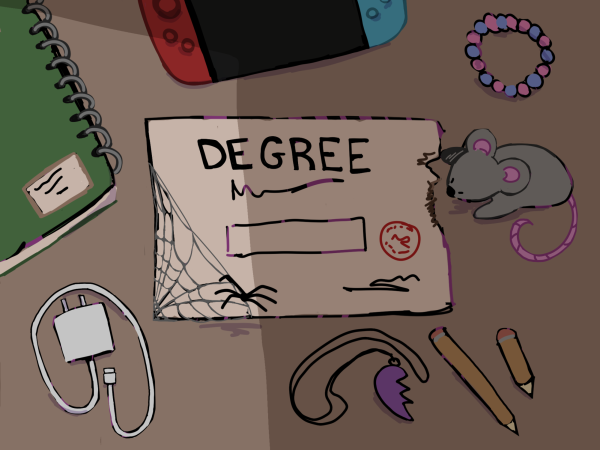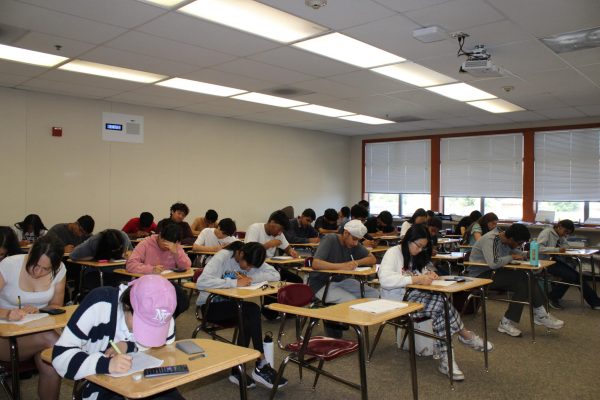Colleges are ripping students off again
Many students are paying same tuition or more despite classes being taught virtually
Ever since the COVID-19 pandemic started, colleges have lost millions of dollars in funding, forcing them to turn to tuition to help bring in money – even though school is online.
A significant amount of these schools’ budgets comes from the upfront tuition that students pay to enroll. But now tuition will be relied upon even more as a source of income because government funding has been reduced because of the pandemic.
Public schools had 41 percent of their funding coming from the government during the 2017-18 school year, while only 20 percent came from tuition, according to the National Center of Education Statistics, which is part of the Department of Education.
The main source of financial stability for public colleges, however, may be in jeopardy because of the coronavirus pandemic. The California state government is hoping for a federal bailout by October to reverse $1 billion in budget cuts to the UC and California State University systems, according to the San Francisco Chronicle.
For the 2020-21 school year, government funding has been cut from public schools and it has been hard to get funding from other revenue sources due to COVID-19. So, public schools have been turning to tuition as one of their main sources of revenue.
As a result, students and their families are the ones who are getting hurt most in this situation. It is unfair that undergraduates still have to pay the full price of tuition, or slightly less, without getting the full college experience.
Undergraduate students who are forced to learn from home this year should expect the overall cost to attend university to be lower, but this is not the case because colleges have been stubborn in this regard. Stanford’s official website indicates that tuition will not change or be refunded if the instruction occurs remotely for any part of the year. The same message was also found in the University of California’s admissions page.
Even with classes being taught online, the tuition rate has been reduced a marginal amount, if at all, which is a struggle for students trying to make ends meet in this tough time.
“The reality is that the costs of running a university continue to rise each year, and tuition only covers a portion of the cost of a student education,” according to a statement published by Annenberg Media, University of Southern California’s student newspaper. “In the 2020-2021 academic year, in particular, we expect to incur significant new expenditures to ensure the health and safety of our students.”
USC raised tuition 3.5 percent to $59,260 for the 2020-21 school year.
This is the case with community colleges in California as well, even though these schools cost a fraction of the price. In-state students only have to pay $552 for a semester during COVID, a price that doesn’t include rooms and board or healthcare, according to California Community College’s official website.
Even though community colleges are significantly cheaper, there is no doubt that the prices are still rising. And because of COVID-19, universities have to spend more money on ensuring the health and safety of students whether they are in the comfort of their own home or in a college dorm room.
This might not be as big an issue with undergraduate college students from upper-middle class cities like San Ramon, but there is no doubt that this is still a problem with less fortunate families, as well as out-of-state or international students who typically pay higher tuition than in-state students.
Sarah Zhang, who graduated from Cal in 2020 and is a freshman at UC Berkeley, said she isn’t affected by the tuition rates directly, but knows many who are struggling.
“I’m fortunate enough to attend an in-state public school with in-state tuition,” Zhang said. “But I know a lot of my classmates who are out of state or are international students definitely feel like they’re being cheated in a way.”
On top of financial issues the pandemic has created for college students, there is still a regular rise in tuition because of annual inflation.
The annual inflation rate of tuition for UCLA is about 0.1 percent for in-state students and about 2 percent for out-of-state students, according to College Tuition Compare, a tuition comparing website. Those percentages might seem small but will surely add up over time. COVID-19 definitely won’t be gone by fall of 2021, and annual inflation rates will still be rising.
What’s most scary about this is how this will impact the decisions of Cal’s current and future seniors when they are looking to apply to college in years to come.

Sienna Morgan is a sophomore at Cal High and is excited to begin their first year as a reporter for the Californian! Sienna has a passion for creative...

